From anti-tank to universal: evolution of portable missile systems
The MBDA MMP development missile can be launched from confined spaces, and its minimum range is well suited for urban combat.
Man-portable anti-tank missile systems were developed to combat the main combat tanks. In the late 80s, British airmobile battalions were equipped with twice as many ATGMs as compared to standard battalions. 48, not 24, because their tasks included fighting the tanks of the Warsaw Pact and squeezing them out under attack helicopter fire. However, it is worth noting that in the Falkland War in 1982, the British army used the ATGM “Milan” not only for armored, but also for unarmored targets, for example, machine-gun crews.
Let's start with the newest anti-tank missile complex MMP (Missile Moyenne Portee - a portable medium-range missile), which entered service, in this case the French army. The complex of the fifth generation, rocket and launcher, fully digital. From the very beginning, the DFID was developed by MBDA as a universal system, since the experience of past conflicts showed that the French army used most of the missiles in targets that did not even remotely resemble a tank.
The fifth generation MMP rocket was developed by MBDA as a replacement for the obsolete Milan complex.
French DFID
The requirements of the French army included the fight against the objectives of the three main types: modern main battle tanks (MBT), buildings and facilities and manpower in open areas. Other requirements for the new complex included the conduct of hostilities in urban environments, that is, a reduced minimum strike distance and the possibility of launching from confined spaces. Two elements make the MMR complex truly universal, a combat unit and a method of destruction. In the warhead of production Saab Bofors Dynamics Switzerland used the latest developments in the field of energy materials and technology lining cumulative projectile. Although the information on the complex is rather scarce, it can be assumed that the development of molybdenum claddings of different thickness used in other anti-tank missiles with cumulative combat units could also be used in this new weapon system. As for a different method of destruction, then in this case the rocket body behind the main rocket engine, in the place where the main charge is located, has notches for the formation of fragments of a given shape and weight.
In order to obtain a different type of impact in the final section, a programmable fuse is included in the system, while the use of a single universal combat unit of a new generation reduces the logistic load compared to specialized missiles. When firing at a tank, the leading charge immediately behind the dual-mode homing head (thermal and television) and the inertial measurement unit detonates first, initiating detonation of the dynamic protection units, while the distance between the leading and main charges ensures that the cumulative jet generated last will focus on the main armor in order to obtain maximum impact. MBDA declares armor penetration "more than 1000 mm rolled uniform armor." How many millimeters lies behind the word “more” is an open question, since modern technologies must provide armor penetration beyond 10 charge diameters. Given that the rocket has a diameter of 140 mm, and the prefragmented case reduces it somewhat, we can safely assume that armor penetration should be much more than a meter of rolled armor, because the rocket of much smaller diameters pierce almost one and a half meters.
For some, it may seem unexpected, but when used on structures (infrastructure of any type), the leading charge does not detonate. According to MBDA, the impact of the leading charge can reduce the effectiveness of the main charge, so the latter detonates with a corresponding delay. The company carried out complex tests using the MMP rocket at buildings, caves and other objects in order to confirm the effectiveness of the warhead in a concrete-cutter mode.
And, finally, another equally important application of the MMP complex is the fight against manpower in an open area, when the distribution of the dispersion of kinetic fragments is a key parameter for ensuring maximum efficiency. To achieve maximum impact rocket flies on a steep (hinged) trajectory. This allows you to get a better distribution of fragments with less dispersion and gives the operator a few additional seconds to refine the guidance parameters, which is important, since the human response time is almost constant. As a rule, in the concrete-breaking mode, the MMR rocket flies along a sloping (flat) trajectory, whereas in the anti-tank mode it flies along a hinged trajectory and when meeting a tank, a tandem shaped charge is triggered. This mode is used by default, unless the operator chose otherwise before starting.
In the anti-tank mode, the default MMP rocket flies along a hinged trajectory, attacking the target from above, which allows you to hit the main battle tank in the most vulnerable places
Highly versatile rocket
As for the further development of the DFID complex, there is a debate on a possible increase in the range of action. Obviously, this will require a higher launch speed. The existing rocket accelerator provides the launch of the rocket at a speed of 15 m / s, after which, more than a meter from the launcher, the main rocket engine begins to work, which makes it safe to work with the complex in confined spaces. Increasing the speed will mean not only limiting the use of MMD in the premises, but also increases the minimum distance of defeat, and this is a key parameter in urban combat.
It is clear that the range limitation of 4 km corresponds to the French requirements, but, according to the developer, without large modifications, the missile's range can be slightly increased. However, when using the complex MMP as an infantry system, direct visual fields are limited. All this speaks of the enormous potential of the system under consideration. The MMP complex is a modern, fully digital system, digital technologies are widely used in the rocket and the launcher, which allows to simplify its integration into ground platforms. The MBDA complex has already been selected by the French army for installation on the new reconnaissance armored vehicle Jaguar 6x6, while installation on other towers is also considered to be a fairly simple task. In addition, the company is already looking at the possible integration of the rocket into a tactical drone. There is some interest in installing the DFM on light boats and ships, mainly special forces units, and MBDA is already considering ways to implement such solutions. With regard to integration into helicopters, in order to determine the needs of potential customers, the company conducts a feasibility study and market research.
The LR2 rocket is the newest member of the popular Spike family. It has a new uncooled GOS and a new universal warhead.
Israeli rich combat experience
History The use of Spike anti-tank systems, developed by Rafael Advanced Defense Systems, began during the Arab-Israeli war 1973, when the Israeli army had to repel the enemy’s massive tank attacks. The ancestor of the family was the Spike NLOS model (non-line of sight - out of the line of sight), which in fact can be attributed to artillery weapons because of its 30 km range and method of destruction.
Currently, this family has expanded significantly, it is replenished models Spike SR (1,5 km). Spike MR (2,5 km), Spike LR (4 km), Spike LR2 (new version with 5,5 km range) and Spike ER (8 km). With the exception of two short-range SR and MR self-guided missiles, all Spike missiles are equipped with a reel with a fiber optic wire connecting it to the launcher.
The result of hitting a Spike LR2 rocket in a reinforced concrete wall. New realities require portable missile systems to increase their ability to combat unarmored objects.
The latest version of the Spike LR2, introduced in the middle of 2017, was designed from the very beginning as a universal system. Spike LR2 is lighter than the previous LR version due to the use of modern materials. In addition, this rocket has a lower activation time due to the uncooled thermal imaging sensor of the new generation, which provides a better image compared to the previous Spike LR model and allows you to abort the fire mission and reuse the same rocket. The missile’s capabilities were also enhanced by the addition of an inertial navigation system that allows you to launch a rocket into the target area and, in flight, refine targets for impact using day / night sensors in the nose and transmit the image via fiber optic cable in real time. Only available on the larger Spike NLOS. The LR2 model is available with two different warheads: anti-tank and universal. The anti-tank warhead with a tandem shaped charge is optimized to destroy heavily armored targets. In order to cope with modern goals, Rafael has provided it with some versatile features. At the expense of the push-button switch, the operator can switch to the concrete mode when the warhead breaks through the wall and detonates inside. This significantly increased the functional flexibility of the anti-tank option, but Rafael decided to move on and developed a universal warhead for their LR2 rocket. It includes a smart fuse that is monitored by the operator in real time before the meeting with the target, thus allowing you to switch from one object to another until the very last moment.
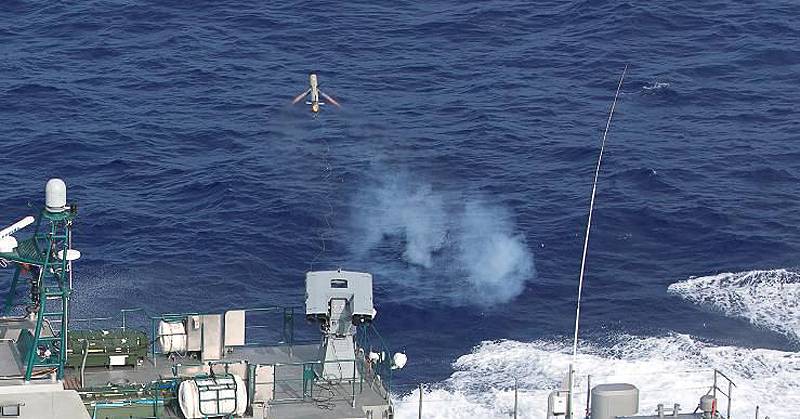
Spike NLOS and Spike ER missiles are installed on Israeli ships fleet to combat coastal targets
A rocket with a universal warhead can pierce a wall of reinforced concrete 200 mm thick (including metal reinforcement) by creating a pressure of more than 340 bar. After penetration, the FTB (Follow-Through-Bomb) warhead detonates with a delay, creating a thermobaric effect indoors. In recent years, these anti-bunker capabilities have been demanded by many users, Spike complexes in various versions are in service with the armies of 28 countries. In addition to the break-through mode, a remote mode was added, allowing the operator to select the detonation of the warhead in the air and hit targets in shelters. All these capabilities make the Spike LR2 rocket an effective tactical solution for most operational tasks, from anti-tank and anti-ship to anti-bunker and anti-personnel.
Rafael has developed an ultra-lightweight Spike missile launcher for light aircraft.
While the Spike MR, LR and LR2 variants can be considered portable, since the manufacturer indicates the mass of these 13 kg rockets, the mass of the long-range Spike ER with the launch container is 34 kg. The complex is available in versions for mobile combat platforms and helicopters, while the rocket can be launched from the same launcher that is used to launch MR, LR and LR2 missiles. The missile is equipped with a fragmentation-armor-piercing warhead with a delayed-action fuse, which, after penetrating the building structure or the side of a naval vessel, has an effective high-explosive impact inside the object. Recently, the Spike ER was selected by the Philippine fleet for installation on multi-purpose assault boats, three of which were introduced to the fleet in May 2017.
As for the Spike NLOS, the first member of this family, this rocket was upgraded with a fragmentation-armor-piercing warhead with an impact on the target like the effects of the above-described ER variant. The guidance system allows you to hit targets with high accuracy, which reduces indirect losses when shooting at buildings, and in naval combat, by destroying superstructural superstructures and neutralizing command and control points, avoiding ship flooding and possible conflict escalation.
Swedish portable anti-tank complex RBS-56B Bill 2 оm Saab Dynamics implements the principle of remotely detonating a shaped charge over the target (in the place of the smallest thickness of armor)
Swedish art
The Swedish RBS-56B Bill 2 ATRA developed by Saab Bofors Dynamics is a further development of the Bill 1 variant. It implements the principle of remote blasting of the cumulative explosive charge above the target (in the place of the smallest armor thickness). The semi-automatic missile guidance system along the line of sight is provided by a fiber optic cable connecting the rocket with the launcher.
Two alternative modes were added to the Bill 2 rocket, which made it multitask. When firing at tanks, the rocket is launched on a hinged trajectory, while the magnetic and optical sensors are active, and special algorithms optimize detonation above the chain. In the launch mode, the rocket flies along the line of sight, all sensors are disabled, and detonation is triggered by a percussion fuse. When shooting at weak targets, including manpower, the rocket is launched on a hinged trajectory, in this case only the optical sensor is active, and special algorithms also optimize the moment of detonation. The company refuses to provide information about any possible developments aimed at improving the Bill 2 variant.
Short-range missiles: versatility from the start
As a consequence of recent conflicts, more and more relatively cheap portable systems with a small radius of action appear. Priority goal types lead developers to focus on universal capabilities. In addition, weapons become controllable, since appropriate accuracy is necessary to reduce indirect losses. To improve combat effectiveness in urban environments, the minimum range is reduced as much as possible (taking into account the safety of the calculation). At the same time, taking into account the flight time, all these systems undoubtedly belong to the homing, launched on the "shot-and-forget" principle.
Israeli small Spike SR rocket
The most developed system in service with at least one customer is the Spike-SR (Short Range) short-range missile from Rafael. To capture a target, an uncooled infrared HOS of the 3 generation installed in front is used; its activation time is less than 6 seconds. While in the long-range Spike missiles the sensor head is installed in the gimbal, it is fixed for the SR rocket. For missiles available various warheads. The most common of them - anti-cumulative, it is designed to combat light and medium armored vehicles. Fragmentation and concrete-fighting combat units are less popular, the latter was taken from the Matador missile complex. The Spike SR missile system entered service with the Singapore Army.
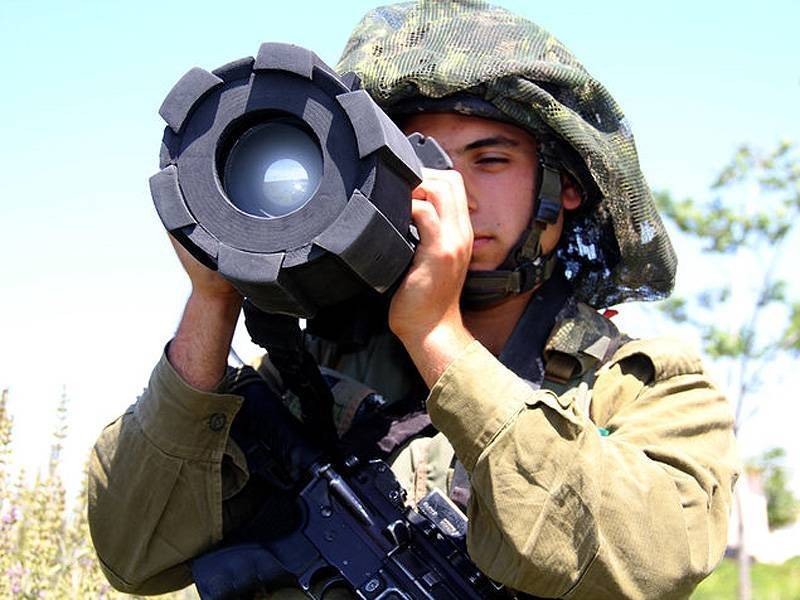
To capture targets, the Spike SR rocket is equipped with an uncooled GPS
German abilities: Enforcer
After three years of development, the European manufacturer of rocket systems, MBDA Germany, at the end of 2018 and the beginning of 2019, will conduct qualification tests of its Enforcer complex. The system used the results of research conducted in the framework of various programs of this company. In order to reduce the cost of the Enforcer complex, it is widely applied the principle of modularity and ready-made components. Its characteristics comply with the requirements of the German Bundeswehr, which intends to supplement the existing system with the existing RGW90 AD missile system (in the German army received the designation Wirkmittel 90) from Dynamit Nobel Defense.
The Enforcer complex will be equipped with an Airbus OS Optronics Dynahawk removable sighting device, including an optical sight with a magnification of x5.5, a laser range finder with measurement accuracy up to 1 meter at maximum distance, atmospheric sensors (pressure, temperature and wind speed) and automatic target capture and tracking. The Dynahawk sight allows you to program the fuse and choose, depending on the target, between the air blasting, the shock mode and the shock mode with a delay. The rocket is equipped with an optoelectronic homing plant that uses an innovative image stabilization technology (“virtual gimbal”), that is, the optical homing head is not fixed in the gimbal suspension, but rigidly in the rocket body.
Light rockets, such as the MBDA KFK Enforcer, are mainly designed to destroy structures and combat manpower, but they are also effective against light and medium armored vehicles.
The Enforcer complex is fully versatile thanks to the multipurpose high-explosive fragmentation warhead developed by TDW. The universal warhead allows you to successfully fight against unprotected targets behind cover, buildings and lightly armored vehicles. After tests at fixed targets conducted at the end of 2017 at distances from 1000 to 2000 meters, tests were performed in an air blast mode. One of the missiles on the test was released from a light launch tube from carbon fiber developed by MBDA Italy. MBDA has been working tirelessly to reduce the minimum launch range in order to better meet the requirements of urban combat. Other options are expected, although in MBDA they are not inclined to give information on them.
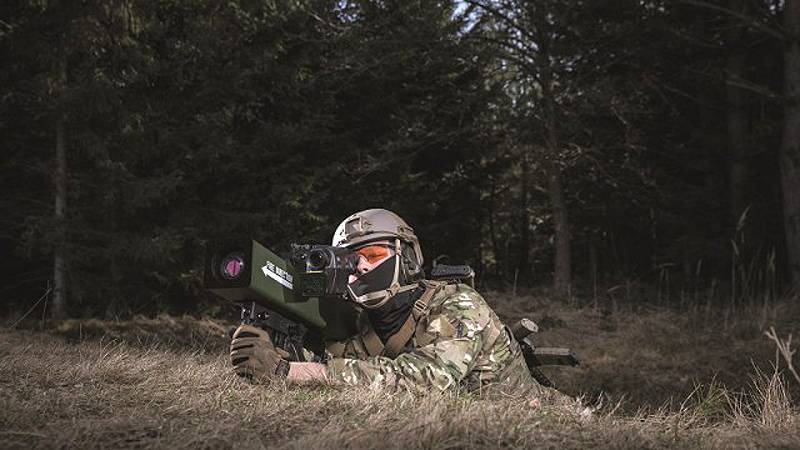
In the KFK Enforcer complex, developed by MBDA Germany, many off-the-shelf components have been used to reduce the cost. The qualification tests of the complex should begin by the end of the year.
Sweden again: ULM
The study of the so-called concept of Ultra Light Missile (ultralight rocket), the company Saab Dynamics launched in 2014 year with the aim to get a result-controlled ammunition for the 84-mm grenade launcher Carl Gustaf. The program is at an early stage and there is very little information on it. According to Saab Dynamics, individual components are already almost available, work is currently underway on fitting them into the caliber 84 mm. The rocket will have a soft launch system, that is, the rocket engine will start to work after the rocket leaves the launch tube. Since the folding rudders and carrying wings of the rocket do not “fit” well with the rifling of the barrel, the preferred solution is to place the ULM rocket in a container, which in turn will be inserted into the Carl Gustaf launch tube. However, this gives a very small loss in the caliber, which can affect the warhead. In this regard, other options are considered, because the rocket is at an early stage of development. Saab Dynamics intends to keep the rocket launch sequence as close as possible to the launch algorithm of any other shot for Carl Gustaf.
In order to improve the range and accuracy of its 84-mm Carl Gustaf grenade launcher, Saab Dynamics began studying the concept and development of an ultra-light Ultra Light Missile rocket with a range of about 1500-2000 meters
The rocket will have in the bow of the homing head with the capture target before launching a rocket. Its type will depend on the cost-to-performance ratio, although installation of a head operating in two ranges is not excluded. What can be said for sure with certainty is that the ULM rocket will have multi-mode attack characteristics, since an attack from above is necessary to destroy tanks. Decisions on the types of combat units have not yet been made, although the two most obvious choices are multipurpose and anti-tank cumulative. With the ULM rocket you can launch from limited spaces, it will weigh about 5 kg and have a range of one and a half to two kilometers. The schedule of this program will be influenced by the interests of the customer and for this reason, Saab Dynamics does not make assumptions about the date of the appearance of the new rocket.
Materials used:
www.shephardmedia.com
www.mbda-systems.com
www.rafael.co.il
www.saabgroup.com
www.armyrecognition.com
www.doppeladler.com
www.pinsdaddy.com
www.dmitryshulgin.com
www.wikipedia.org
en.wikipedia.org
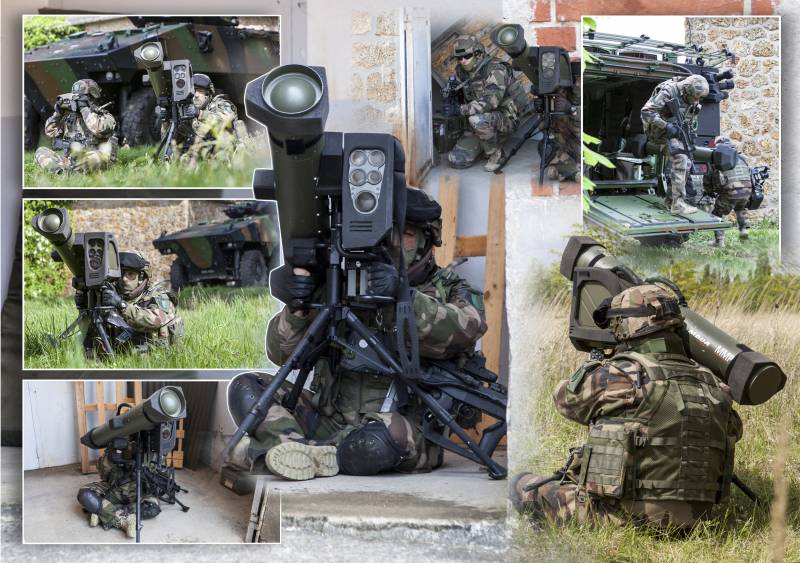
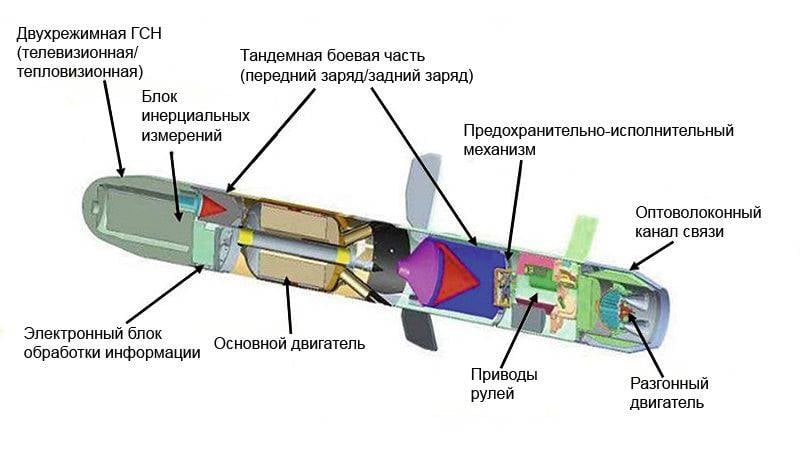
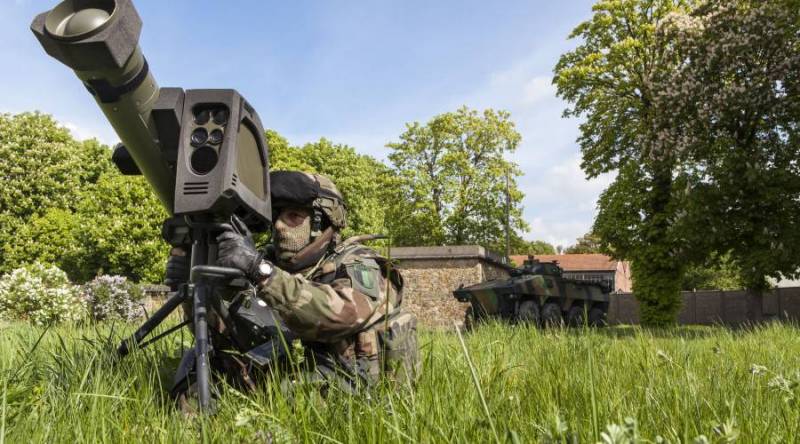
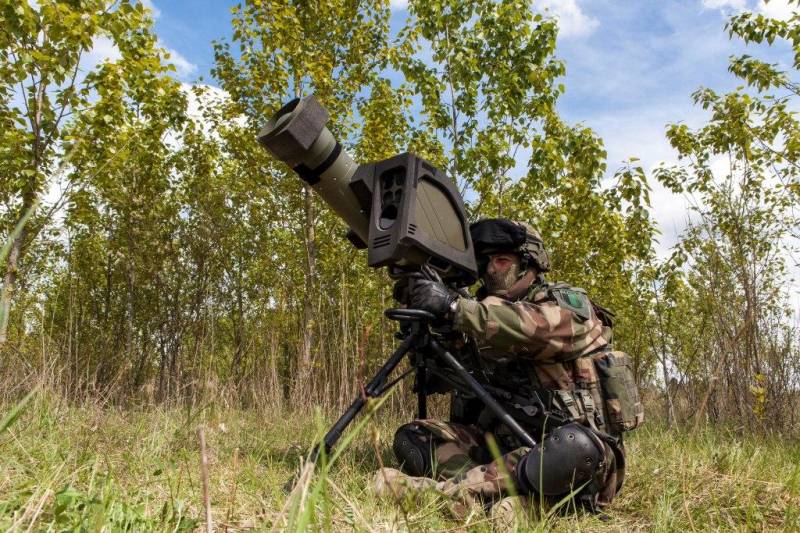
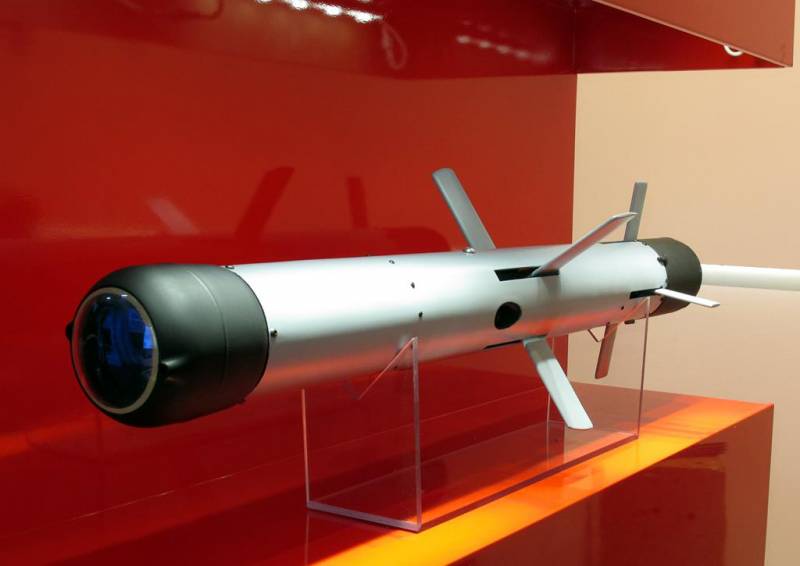
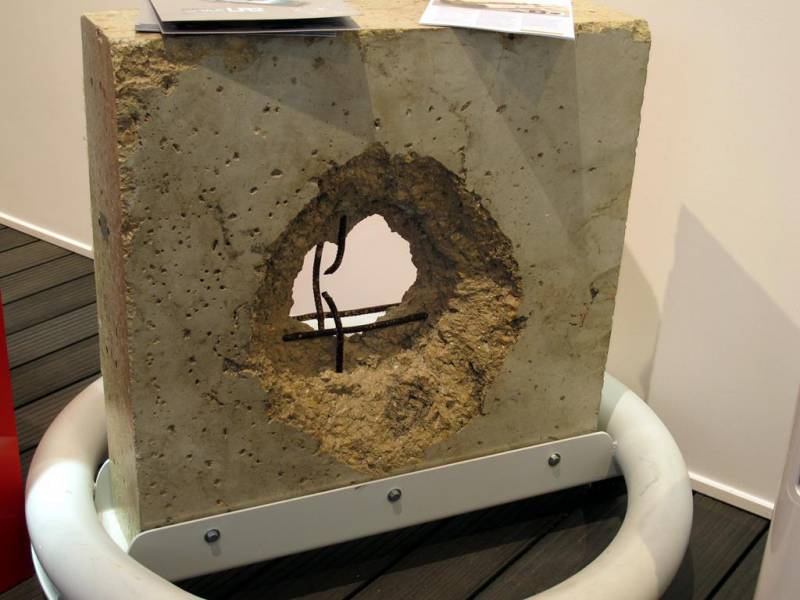
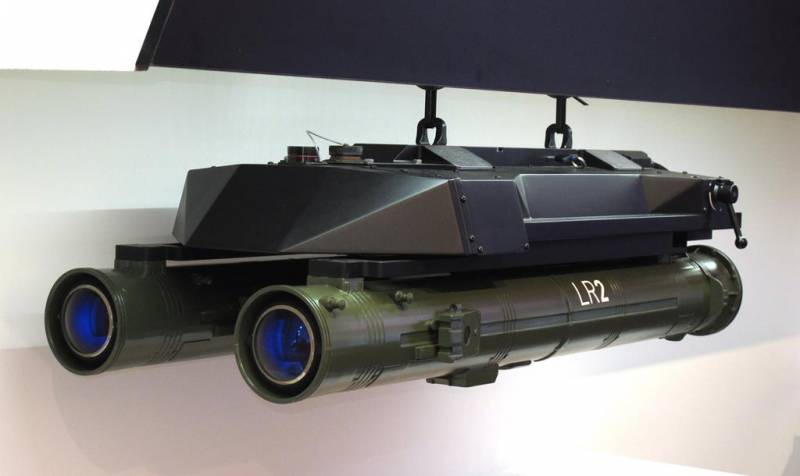
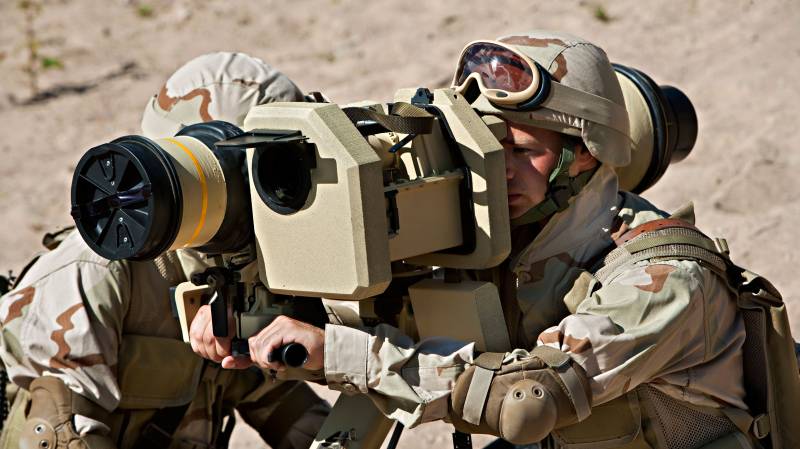

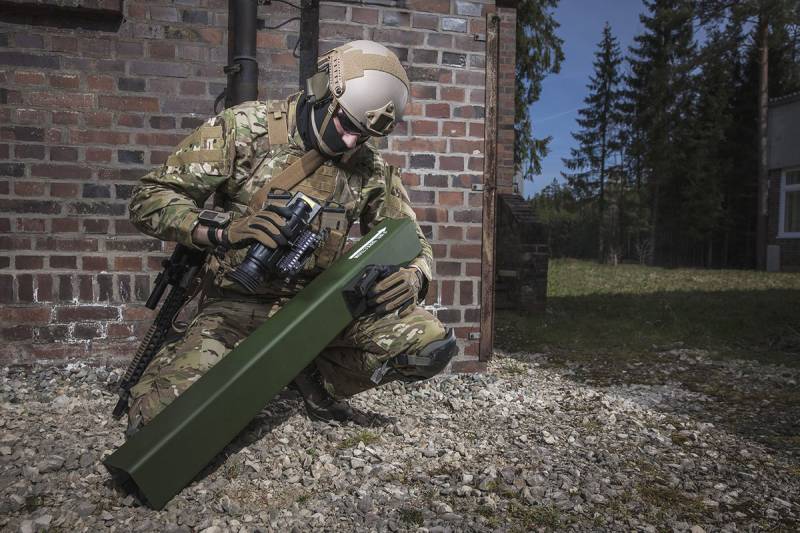
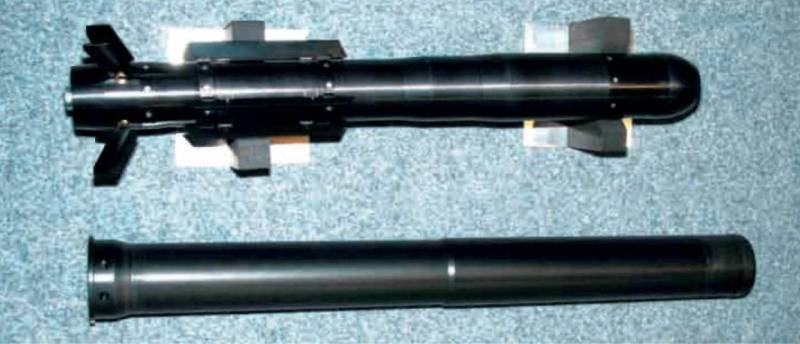

Information